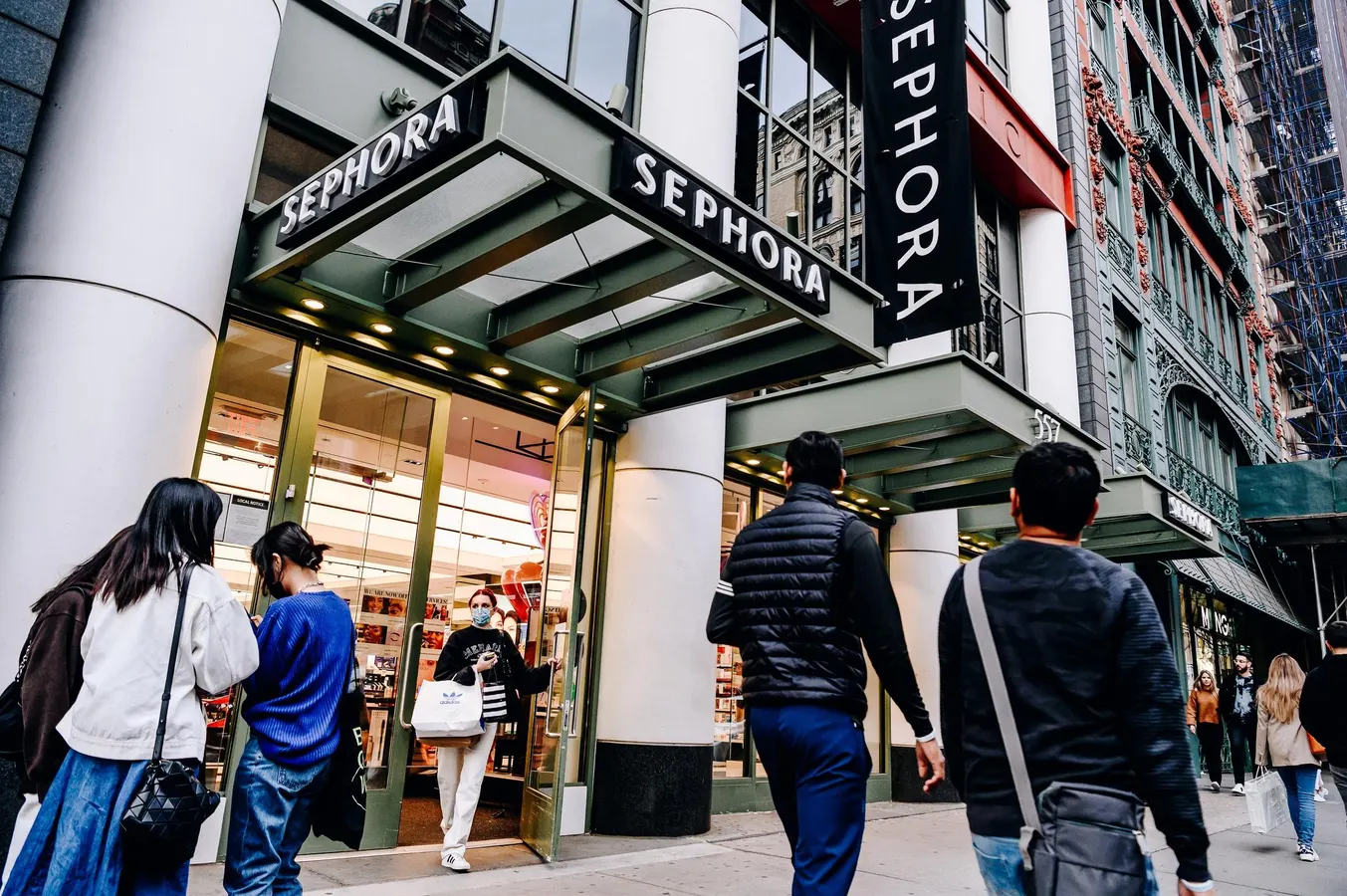By Contributor,Jamie Gutfreund,Wendy Wildfeuer
Copyright forbes

Can creators save retail? For decades, retail strategy followed a simple mantra: location, location, location. The right store on the right street meant customers and sales.
A shopper exits a Sephora store in the SoHo neighborhood of New York, U.S., on Sunday, Oct. 24, 2021. Consumers are facing dire warnings to get their holiday shopping done early this year, especially if they’re planning to do it online. Bottlenecks in the global supply chain are posing a new challenge to the e-commerce industry, and out-of-stock items represent a growing concern. Photographer: Nina Westervelt/Bloomberg
© 2021 Bloomberg Finance LP
As retail chains scaled, the focus shifted to shelf space. The brands that occupied the most shelf space inside the store gained an immediate advantage.
When shopping moved online, the fight shifted from real estate to clicks and traffic.
Social commerce has fundamentally transformed the way people shop. Discovery and checkout are merging into a single cycle, creating both opportunities and chaos, which is precisely why brands need their own creator infrastructure.
The next phase is the rise of dedicated creator storefronts. Instead of sending traffic off-platform, creators now host the shelf themselves, operating as merchants rather than affiliates.
Sephora and Condé Nast Launch Creator Storefronts
Sephora announces new dedicated creator storefronts powered by partner, Anchor by Motom
Last week, Sephora unveiled My Sephora, which provides creators with their own shoppable storefronts within the retailer’s commerce ecosystem. Condé Nast introduced Vette, a platform that leverages Vogue’s editorial authority to create creator-led storefronts, providing the media company with a foothold in the commerce space.
MORE FOR YOU
Motom’s Track Record: Macy’s, Bloomingdale’s, and American Eagle
Sephora partnered with Motom, the company co-founded by Wendy Wildfeuer, Matt Diamond, and Tim Trevathan, to power its storefront strategy. Motom also works with Bloomingdale’s, American Eagle, and Macy’s. At Macy’s, its Style Crew program scaled to more than 300 creators, generating 21 million impressions, nearly 3,300 posts, and a 57% year-over-year revenue increase. The performance gains are dramatic. Motom’s clients have seen conversion rates increase 10 times compared to traditional affiliate programs, alongside higher average order values.
Why Creator Storefronts Are Not Affiliate Marketing
At first glance, creator storefronts may appear similar to affiliate programs. They’re not. Storefronts close the purchase loop. Checkout occurs within a customized creator environment, where the creator controls the experience and the brand captures the entire customer journey.
“The internet is chaos. Social media is chaos,” Wildfeuer says. “People tap a favorite creator’s post and get dumped on a generic homepage that feels disconnected from the inspiration. That causes friction.” This chaos isn’t just inconvenient, it’s expensive. When shoppers get “dumped on a generic homepage,” conversion rates plummet. Creator storefronts solve the disconnect by keeping the shopping experience within the creator’s curated environment, where trust and inspiration remain intact.
Macy’s Style Crew program powered by partner Anchor by Motom, scaled to more than 300 creators, generating 21 million impressions, nearly 3,300 posts, and a 57% year-over-year revenue increase.
Wildfeuer adds: “Creators aren’t media units. They’re people who can drive discovery, inspiration, and sales if you give them the right tools and data. That’s when creators move from being part of the media plan to becoming part of the revenue plan.”
Why It Matters: Creators as Merchants, Not Just Influencers
Why it matters: Sephora has effectively turned creators into an exclusive sales force. By moving transactions into My Sephora Storefront, the company is capturing entire customer journeys and building direct relationships with shoppers at the moment of purchase.
The shift is already visible in consumer behavior. NielsenIQ reports that 41% of U.S. beauty and personal care sales now happen through e-commerce, and TikTok has become the eighth-largest beauty retailer in the country. Beauty consumers are already shopping on digital storefronts, giving retailers and creators a way to meet them at the exact moment of discovery.
Data is the unlock. Creators know their audiences better than anyone, but they rarely receive performance data. According to the Creator Rosetta Stone research study conducted by The Harris Poll, 85% of creators say they rarely learn about results from brands after a campaign. Storefronts should change that dynamic. If brands share sales and merchandising data, creators can evolve from making entertaining posts to building repeatable, commerce-driven strategies. That feedback loop is what will separate transactional influencer programs from scaled creator commerce strategies.
The Scale: ShopMy, LTK, and the Acceleration of Social Commerce
The acceleration is visible in the numbers. ShopMy has driven more than $500M in brand sales. LTK, with 40 million monthly shoppers, now facilitates over $5B annually. Sephora and Condé Nast’s storefronts push the category further: turning creators from affiliates into infrastructure. As Wildfeuer says, “We’ll look back and say, of course, every retailer has creator storefronts. It will feel as obvious as e-commerce sites do today.”
Industry Implication: From Media Plans to Revenue Drivers
This marks a bigger shift. Brands are moving from renting creator relationships for content to committing to creators as full-funnel growth partners. Instead of seeing creators only as awareness drivers, brands are treating them as distribution channels, sales associates, and retention engines all in one.
Looking ahead, the model extends beyond storefronts. Motom is developing creator-curated retail media allowing brands to buy placement within creator storefronts, similar to end-cap displays in physical stores. This turns creator storefronts into advertising inventory, creating additional revenue streams for both creators and retailers.
Who owns the moment of purchase? The evolution of the retail landscape has shifted from location to checkout.
Creator Vision
How Brands Can Prepare Now
Even brands not ready to build creator storefronts can start preparing:
1. Audit which creators already drive your highest-converting traffic and engagement.
2. Partner by sharing detailed performance and sales data with a handful of key creators to test the impact of transparency.
3. Co-create with creator partners by testing their content recommendations to see what converts.
The Future of Retail: Creators as Strategic Partners
The brands that win will be those that recognize creators are no longer just media channels. They are retail partners. Where shelf space once existed in stores or magazines, it now resides within creator content. To succeed, brands must equip creators with the same sales data and merchandising tools as traditional retailers. Do that, and creators won’t just drive attention they’ll shape revenue, loyalty, and the future of retail itself.
Editorial StandardsReprints & Permissions



